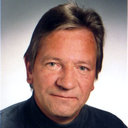Investigation of quinazolines as inhibitors of breast cancer resistance protein (ABCG2).
Keywords
Abstract
Chemotherapy is one of the major forms of cancer treatment. Unfortunately, tumors are prone to multidrug resistance leading to failure of treatment. Breast cancer resistance protein (BCRP), the second member of ABC transporter subfamily G, has been found to play a major role in drug efflux and hence multidrug resistance. Until now, very few potent and selective BCRP inhibitors like Ko143 have been identified. In the search for more potent and selective BCRP inhibitors, we synthesized and investigated a series of differently substituted quinazoline compounds. Several variations at positions 2, 4, 6 and 7 of the quinazoline scaffold were carried out to develop a structure-activity-relationship analysis for these compounds. It was found that compounds bearing a phenyl substituent at position 2 of the 4-anilinoquinazoline scaffold were most potent. On the aniline ring at position 4 of the quinazoline moiety substituents like NO2, CN, CF3 led to very high BCRP inhibition potencies. The most potent compounds were further investigated for their intrinsic cytotoxicity and their ability to reverse the multidrug resistance. Compound 20, an anilinoquinazoline bearing a phenyl ring at position 2 and meta-nitro substitution on the 4-anilino ring, was found to have the highest therapeutic ratio. The most active compounds from each variation were also investigated for their effect on BCRP expression. It was found that compound 20 has no significant effect on BCRP expression, while compound 31 decreased the surface BCRP expression. The only difference in the two compounds was the presence of a 3,4-dimethoxyphenyl ring in compound 31 instead of phenyl substitution at position 2 of the quinazoline moiety. From the study of all target compounds, compound 20 was the most prominent compound having inhibitory potency even higher than Ko143, the most potent BCRP inhibitor known. Compound 20 was also found to be selective towards BCRP with a very high therapeutic ratio.


